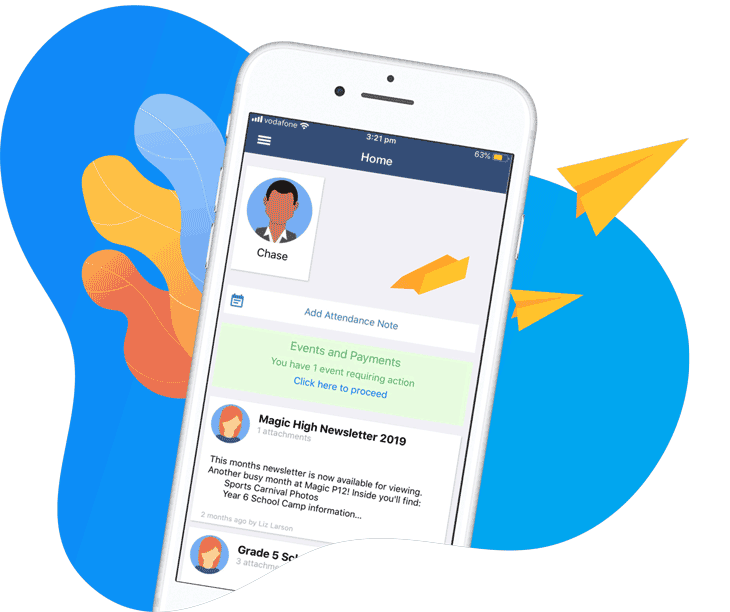Every day, schools make hundreds of decisions – from how to support individual students to where to invest time and resources across the term. But confident decision-making depends on something too often overlooked: having the right information at the right time.
Most schools already collect a wide range of data – attendance, academic progress, wellbeing, behaviour. But when that data sits in different places, used by different teams, it’s hard to get the full picture. That can make early intervention more difficult, increase admin load for staff, and reduce clarity across school teams.
This article explores how a more connected, insight-led approach to school data can support earlier action, stronger planning, and more sustainable staff capacity – helping improve outcomes for students and educators alike.
Connecting the dots – from attendance to wellbeing
Often data capture from attendance records, assessment results and wellbeing notes is collected across multiple systems. While each system works well on its own, when they don’t talk to each other, it can be easy to miss the patterns.
Take a student who’s attending regularly but showing signs of disengagement – declining effort scores, subtle wellbeing concerns, or increased lateness. On their own, these signals might go unnoticed. Seen together, they can help trigger early and targeted support.
Bringing together attendance, performance and wellbeing data makes it easier to identify disengagement early – before it becomes a more serious concern. Integrated insights help schools move from reactive case management to proactive, preventative support.
What schools gain with clearer access to data
When staff have to compile updates from spreadsheets, emails or disconnected systems, decision-making slows down – and workload increases.
Connected data – like attendance trends, academic progress and wellbeing observations – enables faster, more confident responses. It also supports staff capacity by:
- Reducing time spent chasing or compiling information
- Improving communication with families and support teams
- Helping identify students who need help before issues escalate
- Supporting more targeted planning and resourcing
Ultimately, accessible, meaningful data frees teachers to focus more on learning and less on admin. At St Dominic’s College in Penrith, Daniel Khoury, Head of Pastoral Care, has seen this shift first-hand.
“Instead of relying on spreadsheets or manual tracking, we now use Pulse to surface real-time insights – like identifying the student of the week – in seconds,” he explains. “It’s transformed the way we recognise student achievement and has strengthened engagement across the school.”
Using shared insights to align teams and strategy
Beyond the classroom, connected data plays a key role in school-wide planning and leadership.
Being able to monitor patterns across year levels or cohorts provides a stronger foundation for strategic decisions. Over time, this visibility helps schools:
- Spot trends early and respond with confidence
- Allocate resources based on real needs
- Evaluate the impact of wellbeing and learning programs
- Align teams around a shared picture of student needs
Whether it’s a quick team meeting or a planning session, shared data brings clarity – reducing duplication and enabling more coordinated support.
Making insight part of your school rhythm
Data makes a much greater difference when it becomes part of everyday practice.
Rhythm doesn’t always mean routine. It can mean knowing when to pause and look closer – when a pattern changes, when something feels off, or when a student surprises you. Building this kind of awareness into your school’s culture takes time, but it’s powerful. When educators feel confident tuning into the signals around them – not just reacting, but anticipating – insight becomes part of the day-to-day flow.
And although it can seem like a lot of extra work, it’s important to understand this rhythm and mindset don’t need to be complex. When done consistently, they help create a culture of early action, shared responsibility and continuous improvement.
Getting started – small steps with big impact
Creating a more data-informed culture doesn’t mean overhauling every system. Often, the most effective changes begin with a single focus area or routine.
Compass makes this easy by centralising data within one fully integrated system, allowing schools to access and interpret student records all in one place. With clear, visual dashboards and seamless integration across modules, Compass empowers staff to make informed decisions without the need for manual data wrangling or switching between systems.
Some ways to start:
- Choose one priority – track learning, attendance, or any vital data using Student Progress and Attendance and easily monitor trends.
- Audit what’s already available – use tools such as Compass Digest to quickly access detailed insights you’re already collecting.
- Make it part of your meetings – using a quick Pulse view during check-ins helps surface trends across the week, keeping team conversations focused and timely.
- Support confidence – when data is presented visually and in context, it empowers staff to interpret and act on what they see.
Making it easier for teams to see what matters
Once you’re clear on which insights matter most – whether its wellbeing concerns, shifting effort scores or attendance patterns – our advanced data analytics platform, Pulse allows teams to build clear, flexible dashboards. With a wide range of customisable widgets, teams can track patterns over time, compare progress across cohorts, and share insights with leadership or support staff.
By reducing the time spent compiling and interpreting data, Compass Pulse helps staff focus their efforts where they’re needed most.
Starting with a single dashboard focused on one priority area can help teams build confidence and embed data into their everyday routines. As familiarity grows, these insights naturally begin to shape planning, support and decision-making across the school.
Final thoughts – better decisions, better outcomes
By making insights easier to access, understand and share, schools can respond sooner, collaborate more effectively, and reduce the admin load on staff. The goal isn’t to collect more data – it’s to use the data you already have in smarter, more sustainable ways.
Curious how Compass Pulse can help your team spot trends and support students sooner?






